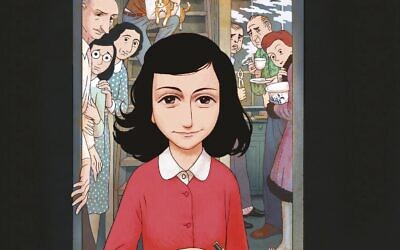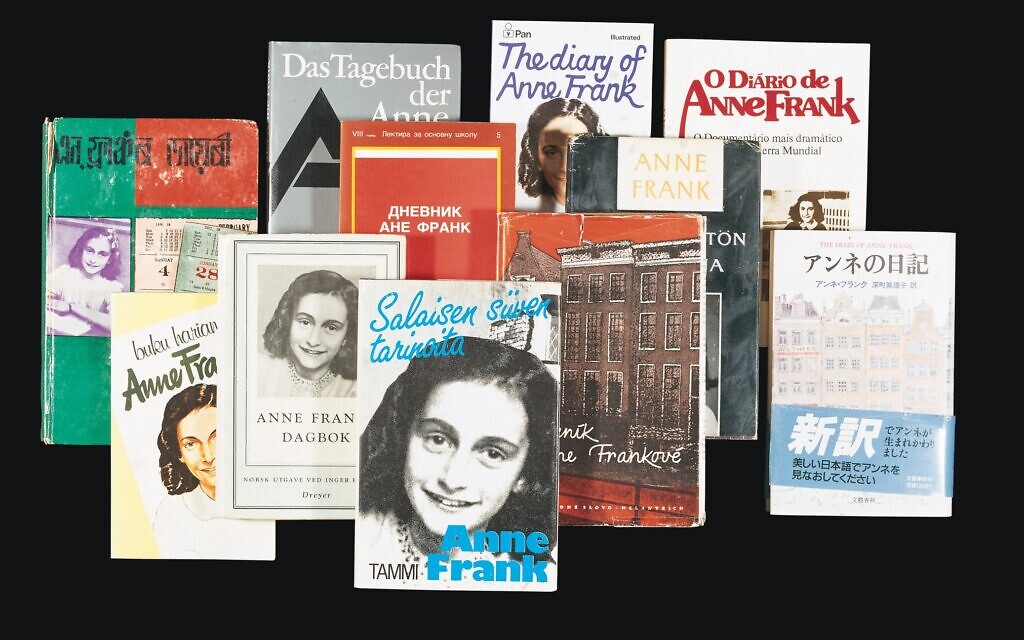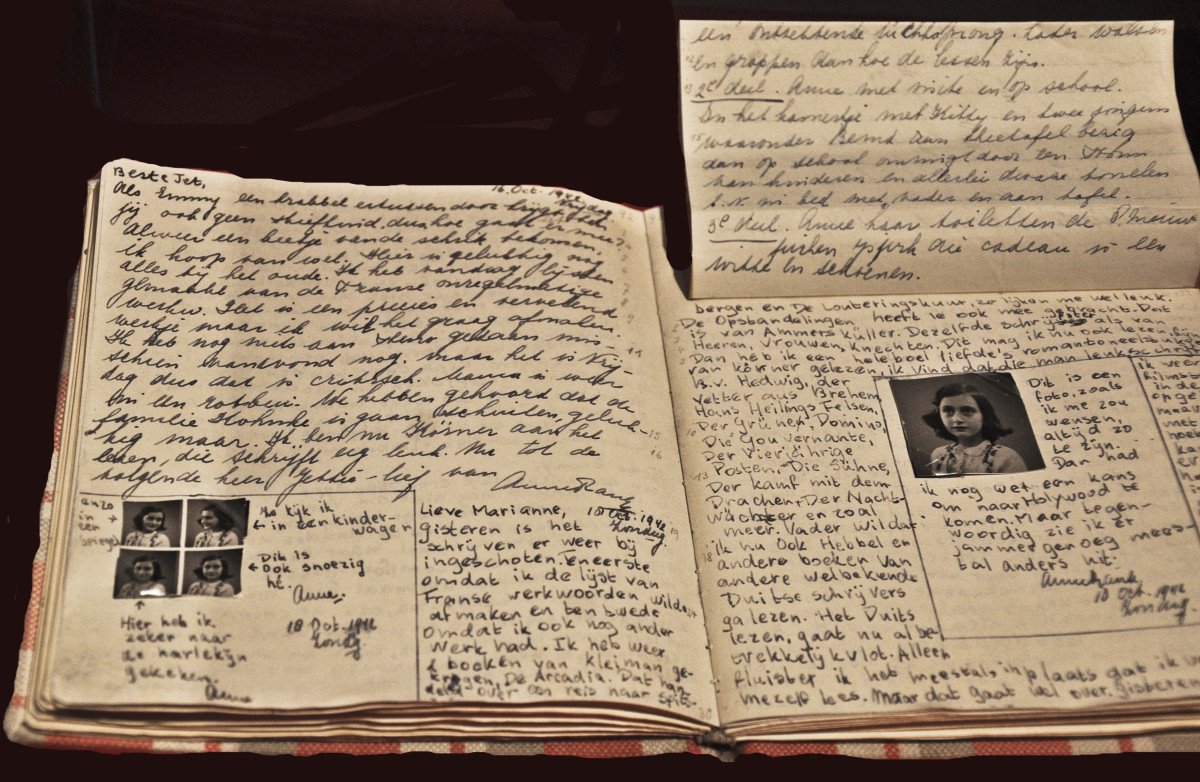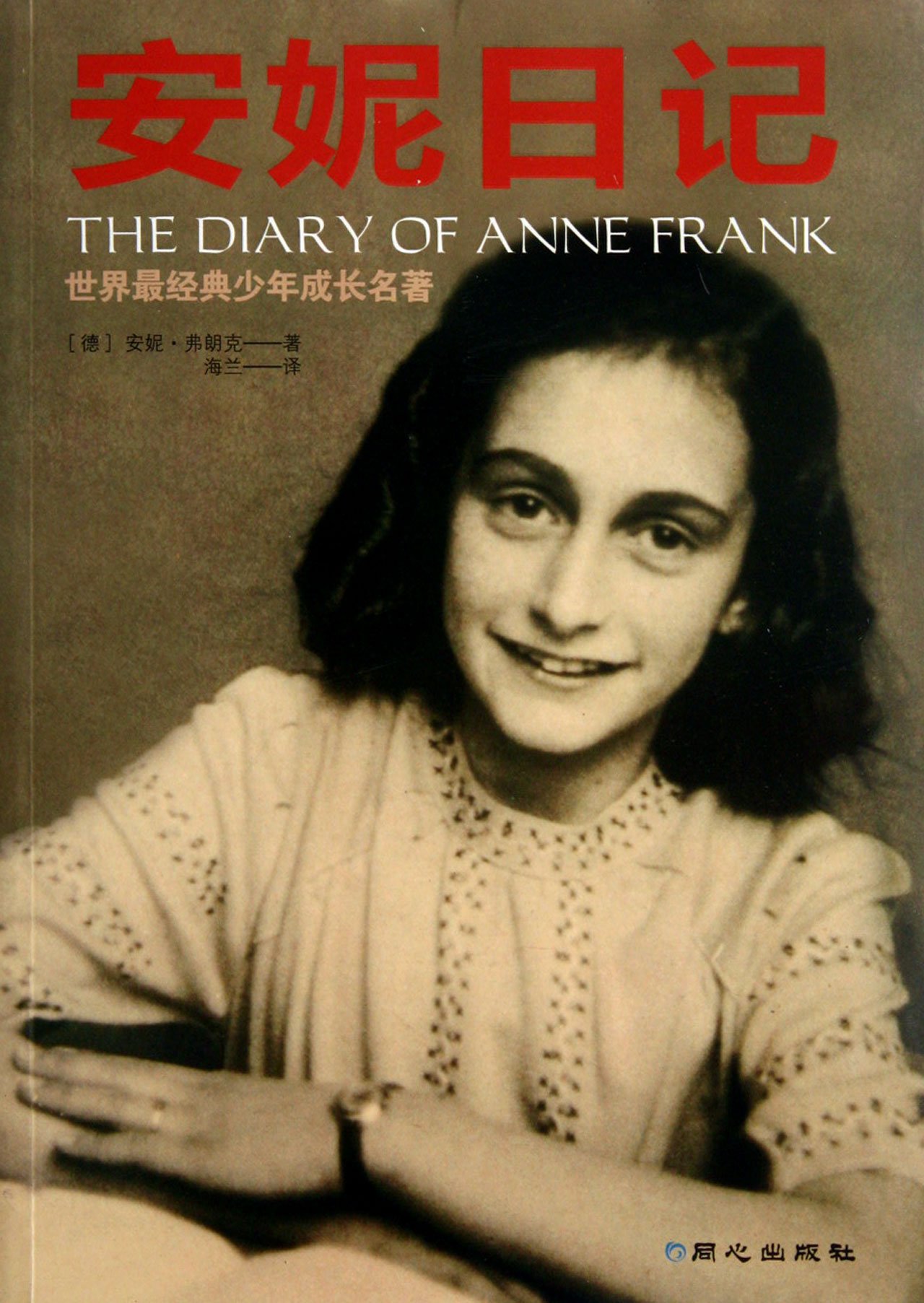Dear Kitty at 80: Anne Frank was given a blank diary to fill this week in 1942
Annelies Marie Frank’s journal has become a classic of war literature. Jenni Frazer looks at the multiple translations and film adaptations of Anne’s tragically short life
Exactly 80 years ago this month a Jewish teenager received, as a 13th birthday present, an autograph book, bound in a red-and-white-checked cover and featuring a tiny outside lock.
Less than a month later, the birthday girl and her family moved into a secret annexe in Amsterdam, where it was hoped that they would survive the war years. The girl, of course, was Anne Frank, and her book — which she had decided to make into a diary, writing entries to ‘Dear Kitty’ — was to become one of the famous books in the world.
Anne Frank’s Diary and her life story have had a global impact. The diary itself has been translated into more than 70 languages and there have been, so far, 25 films made since the diary’s publication, plus numerous stage plays, radio plays, an opera and even a musical composition about the teenager. There have also been spin-off books about the people who helped the hidden Jews, as well as documentaries and newly-discovered archive film.
Get The Jewish News Daily Edition by email and never miss our top stories Free Sign Up
There have also been, more controversially, novels and short stories about Anne Frank, most notably Shalom Auslander’s black comedy Hope: A Tragedy, in which Anne Frank is discovered living in a Jewish man’s attic. “She’s a bitter old woman who swears, eats dead birds and defecates down air vents”.
Novelist Nathan Englander had a go at a short story featuring Anne, too. What We Talk About When We Talk About Anne Frank, features two former childhood friends who meet up in middle age and play ‘the Anne Frank Game’, in which they speculate who among their non-Jewish friends would save them in the event of a second Holocaust.
And if the fiction sounds tasteless, that charge falls away spectacularly when it comes to comparison with comedian Ricky Gervais’ notorious routine, in which he creates a world in which Anne’s family went into hiding from the Nazis because they did not want to pay rent. Gervais has vigorously defended this routine in which his ‘comedy Nazis’ fail to ‘look upstairs’ in search of the Frank family, despite the sound of typing coming from above.
There’s even been an animated cartoon film, Where is Anne Frank?, featuring Britain’s very own Tracy-Ann Oberman, and directed by Israeli film-maker Ari Folman, in which the Kitty to whom the diary is addressed, comes to life and tries to find her creator — as well as engaging with refugees and asylum seekers in present-day Europe.
The truth about Anne Frank is, of course, much bleaker and infinitely more poignant than any of the present-day spoofs and comic routines. But perhaps it is Anne’s very ordinariness, and her dreams of becoming a well-known writer, that lend themselves to an almost constant re-telling — even if sometimes that is a parody.
Anne and Margot spent time in Auschwitz and — just as the war was coming to an end — were sent to Bergen-Belsen.
The diary itself was first published 75 years ago and was returned to Anne’s father, Otto, by Miep Gies, the family friend who helped hide the Franks between 1942 and 1944. Otto was the sole survivor of those who hid in the annexe; as well as his wife, Edith, Anne and her sister Margot, those hiding included the van Pels family — Hermann, Auguste, and 16-year-old Peter — and subsequently the dentist Fritz Pfeffer.
Someone — and it is still not definitively proven who — betrayed the group in August 1944 to the Nazis, who had occupied the Netherlands. The group was herded out and arrested, taken to the Westerbork transit camp and eventually moved to Auschwitz.
Anne and Margot spent time in Auschwitz and — just as the war was coming to an end — were sent to Bergen-Belsen. On unspecified days in March 1945, the sisters died, probably of typhus, in that last murderous Nazi stronghold. Anne was just 15 years old.
By the time he was liberated from Auschwitz, however, Otto had no idea what had become of his family. His mother had spent the war years safely in Switzerland, and in February 1945 he wrote to her: “Dearest Mother, I hope that these lines get to you and all the ones I love – the news that I have been saved by the Russians, that I am well and full of good spirit, and being looked after well in every respect. Where Edith and the children are, I do not know. We have been apart since 5 September 1944. I merely heard that they had been transported to Germany. One has to be hopeful to see them back well and healthy”.
By the time he was liberated from Auschwitz, however, Otto had no idea what had become of his family.
Miep Gies had stolen back to the abandoned annexe after the Franks and the van Pels families had been arrested. She found the scattered pages of Anne’s diary, scooped them up and returned them to Otto Frank when he arrived back in Amsterdam.
It is generally agreed that Otto Frank was astonished at what Miep Gies had retrieved. He did not know that Anne was even writing a diary, much less that she had the sharpest of eyes and ears for describing life in hiding. The red-and-white-checked book’s pages were filled with endless notes and annotations, made the more confusing by the fact that in the crucial teenage years between 13 and 15, Anne changed a great deal and had begun re-editing and re-writing some of the diary entries.
Once Otto understood that his wife and family had perished at the hands of the Nazis, he focused on Anne’s diary to the point of obsession – the last sliver of the life of his daughter. Through the diary, it seems, he sought to bring Anne back to the living world —though not without judicious editing of the diary entries that he found embarrassing.
Despite considerable opposition, Otto managed to publish the first edition of the diary in 1947. But it wasn’t until the mid-1950s that it became a publishing phenomenon, offering a message to young people all over the world. Over the years hitherto unpublished pages have emerged, adding new understanding to this singular undertaking.
Among the most poignant of the diary entries must be this, written by Anne in April 1944: “I want to be useful or bring enjoyment to all people, even those I’ve never met. I want to go on living even after my death! And that’s why I’m so grateful to God for having given me this gift, which I can use to develop myself and to express all that’s inside me! When I write I can shake off all my cares. My sorrow disappears, my spirits are revived! But, and that’s a big question, will I ever be able to write something great, will I ever become a journalist or a writer?”
Anne Frank would have been 93 today had she survived the Holocaust. The Franks were not religiously observant — although ironically they took part in more Jewish practice when in hiding —and Otto Frank maintained until his death that the appeal of Anne Frank’s Diary was its very universality, underlined by its subtitle: The Diary of a Young Girl. Anne’s ambition, to “go on living even after my death”, has been triumphantly realised.
Where is Anne Frank?
 Israeli filmmaker Ari Folman and animation director Yoni Goodman have collaborated on movie that is a fresh and captivating take on the famous diary.
Israeli filmmaker Ari Folman and animation director Yoni Goodman have collaborated on movie that is a fresh and captivating take on the famous diary.
One stormy night a year from now, Kitty, the imaginary friend from Anne Frank’s Diary, magically emerges from the pages. Unaware of Anne’s fate, she embarks on a journey across time and space to find the young author whose curious and bright mind gave her life. With the help of her new friends – a resourceful young man and a refugee girl who has fled her war-torn homeland – Kitty soon realises her true mission: to make Anne’s words change our current reality of struggle and conflict.
Where is Anne Frank? is showing this Sunday 19 June, 5.30pm at Phoenix Cinema, East Finchley www.phoenixcinema.co.uk

Thank you for helping to make Jewish News the leading source of news and opinion for the UK Jewish community. Today we're asking for your invaluable help to continue putting our community first in everything we do.
For as little as £5 a month you can help sustain the vital work we do in celebrating and standing up for Jewish life in Britain.
Jewish News holds our community together and keeps us connected. Like a synagogue, it’s where people turn to feel part of something bigger. It also proudly shows the rest of Britain the vibrancy and rich culture of modern Jewish life.
You can make a quick and easy one-off or monthly contribution of £5, £10, £20 or any other sum you’re comfortable with.
100% of your donation will help us continue celebrating our community, in all its dynamic diversity...
Engaging
Being a community platform means so much more than producing a newspaper and website. One of our proudest roles is media partnering with our invaluable charities to amplify the outstanding work they do to help us all.
Celebrating
There’s no shortage of oys in the world but Jewish News takes every opportunity to celebrate the joys too, through projects like Night of Heroes, 40 Under 40 and other compelling countdowns that make the community kvell with pride.
Pioneering
In the first collaboration between media outlets from different faiths, Jewish News worked with British Muslim TV and Church Times to produce a list of young activists leading the way on interfaith understanding.
Campaigning
Royal Mail issued a stamp honouring Holocaust hero Sir Nicholas Winton after a Jewish News campaign attracted more than 100,000 backers. Jewish Newsalso produces special editions of the paper highlighting pressing issues including mental health and Holocaust remembrance.
Easy access
In an age when news is readily accessible, Jewish News provides high-quality content free online and offline, removing any financial barriers to connecting people.
Voice of our community to wider society
The Jewish News team regularly appears on TV, radio and on the pages of the national press to comment on stories about the Jewish community. Easy access to the paper on the streets of London also means Jewish News provides an invaluable window into the community for the country at large.
We hope you agree all this is worth preserving.
-
By Brigit Grant
-
By Laurent Vaughan - Senior Associate (Bishop & Sewell Solicitors)
-
By Laurent Vaughan - Senior Associate (Bishop & Sewell Solicitors)
-
By Laurent Vaughan - Senior Associate (Bishop & Sewell Solicitors)
-
By Laurent Vaughan - Senior Associate (Bishop & Sewell Solicitors)
























